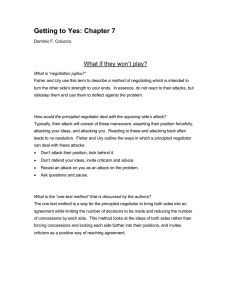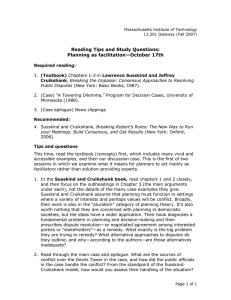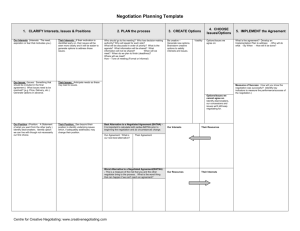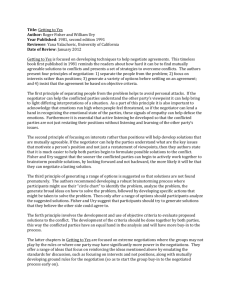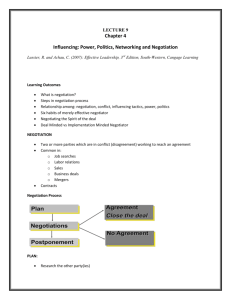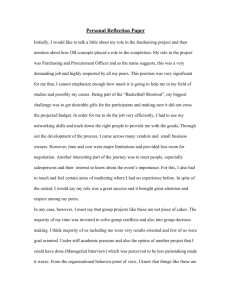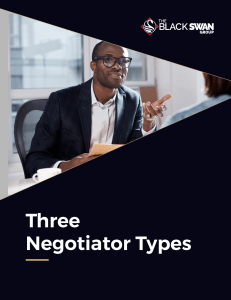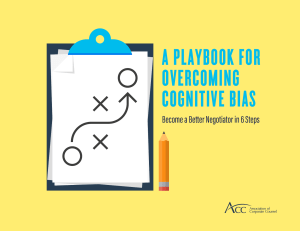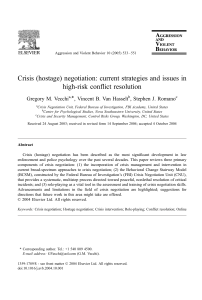Reading Tips and Study Questions: For Session 16
advertisement
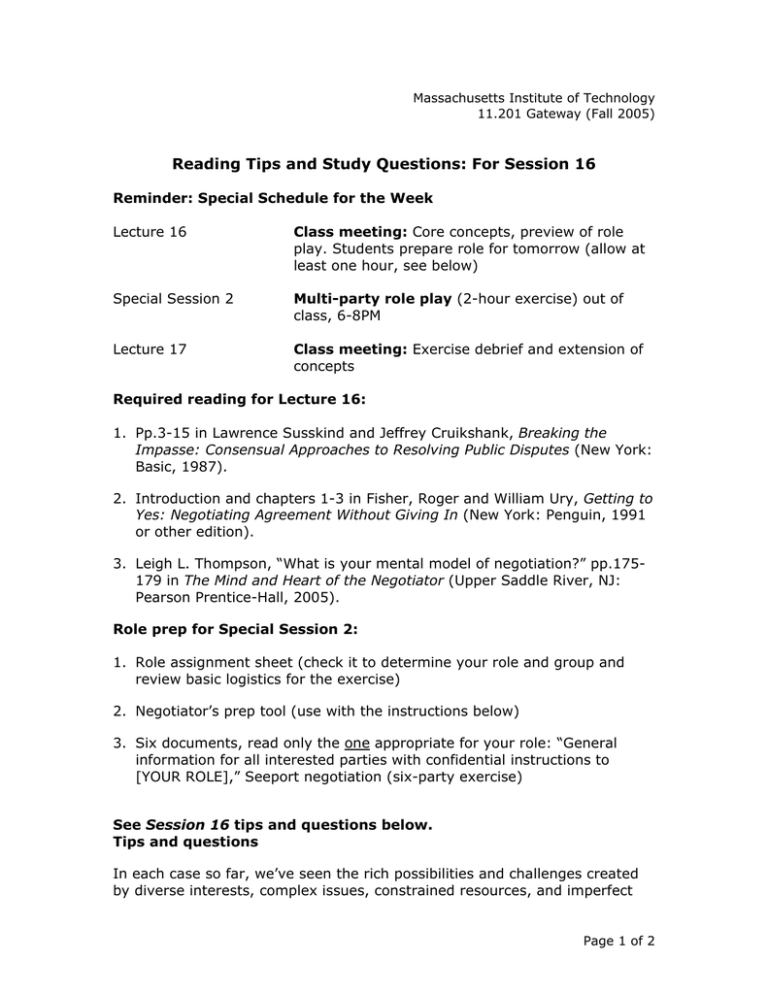
Massachusetts Institute of Technology 11.201 Gateway (Fall 2005) Reading Tips and Study Questions: For Session 16 Reminder: Special Schedule for the Week Lecture 16 Class meeting: Core concepts, preview of role play. Students prepare role for tomorrow (allow at least one hour, see below) Special Session 2 Multi-party role play (2-hour exercise) out of class, 6-8PM Lecture 17 Class meeting: Exercise debrief and extension of concepts Required reading for Lecture 16: 1. Pp.3-15 in Lawrence Susskind and Jeffrey Cruikshank, Breaking the Impasse: Consensual Approaches to Resolving Public Disputes (New York: Basic, 1987). 2. Introduction and chapters 1-3 in Fisher, Roger and William Ury, Getting to Yes: Negotiating Agreement Without Giving In (New York: Penguin, 1991 or other edition). 3. Leigh L. Thompson, “What is your mental model of negotiation?” pp.175179 in The Mind and Heart of the Negotiator (Upper Saddle River, NJ: Pearson Prentice-Hall, 2005). Role prep for Special Session 2: 1. Role assignment sheet (check it to determine your role and group and review basic logistics for the exercise) 2. Negotiator’s prep tool (use with the instructions below) 3. Six documents, read only the one appropriate for your role: “General information for all interested parties with confidential instructions to [YOUR ROLE],” Seeport negotiation (six-party exercise) See Session 16 tips and questions below. Tips and questions In each case so far, we’ve seen the rich possibilities and challenges created by diverse interests, complex issues, constrained resources, and imperfect Page 1 of 2 structures for arriving at legitimate decisions. The theory and practice of negotiation and dispute resolution aim to address all of these problems—at least to some degree. As such, negotiation and dispute resolution are central to planning action; these are essential skills for problem-solvers worldwide. This week offers an intensive but necessarily limited introduction to the field, for which standard introductory courses run a full semester and many advanced elective courses are also available. The background reading is minimal and non-technical, so as to focus you on preparing your role and reflecting on the experience of competing and cooperating—simultaneously, while interacting with others—to craft agreement. 1. Susskind and Cruikshank’s work might be said to diagnose a problem in democratic decision-making and then prescribe dispute resolution (or negotiated agreement among stakeholders) as a remedy. If so, what exactly is the problem they are trying to remedy? What alternative approaches to disputes do they outline, and why—according to the authors—are those alternatives inadequate? 2. Fisher and Ury address themselves more to the individual negotiator or agent (e.g. lawyer representing clients). Does a focus on interests rather than positions necessarily enable negotiators to claim more value (“a bigger piece of the pie”), or are there other reasons for this focus? Why is it important to “invent before deciding”? 3. In Thompson, focus on the “What is your mental model …?” section, which is roughly two pages in length. The creativity exercises in the side panel are useful but not required as prep for our work; they illustrate the importance of identifying and removing mental blocks to better problemsolving. Page 2 of 2
